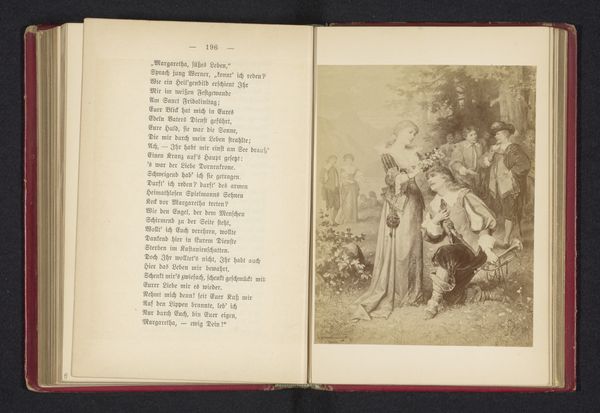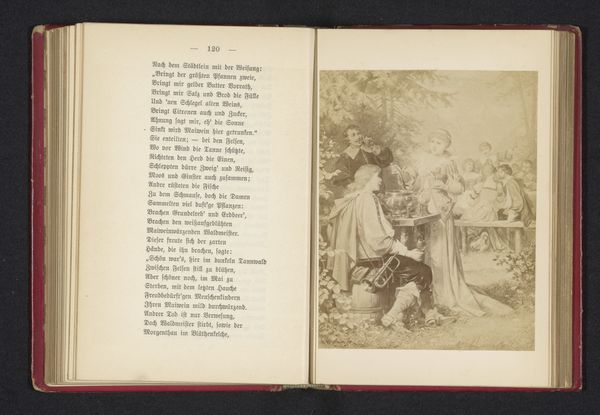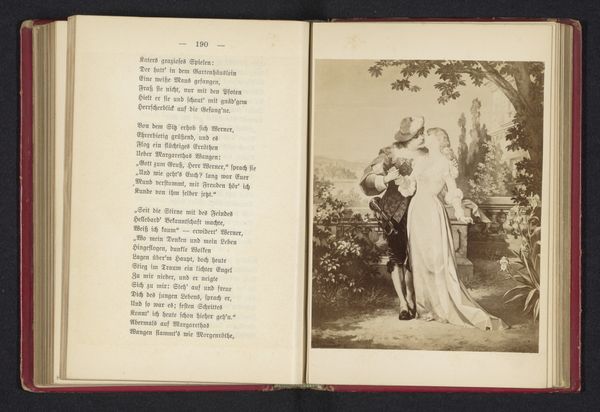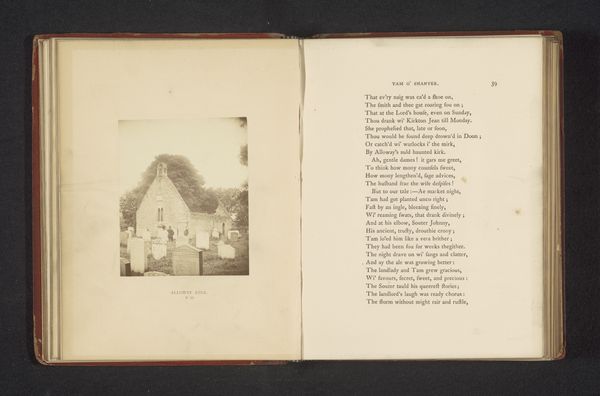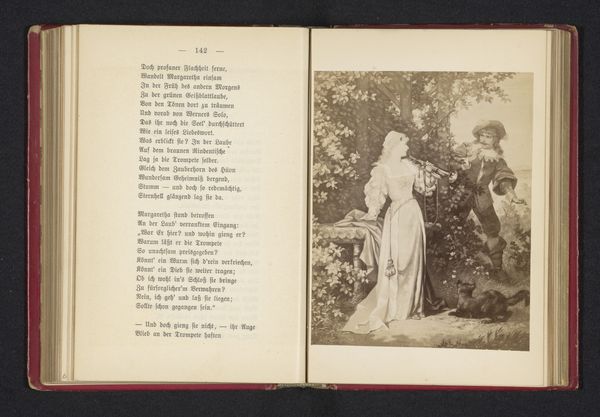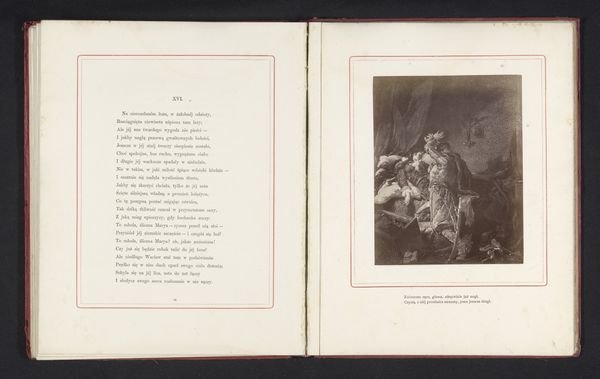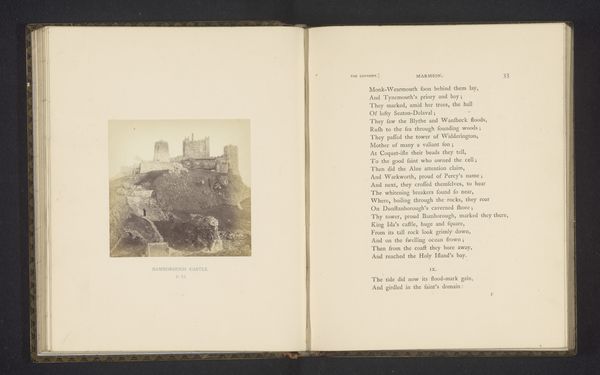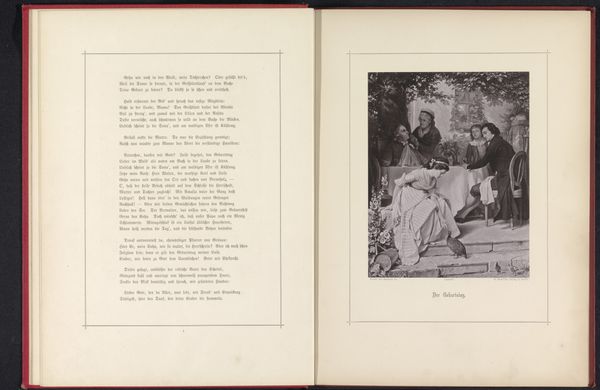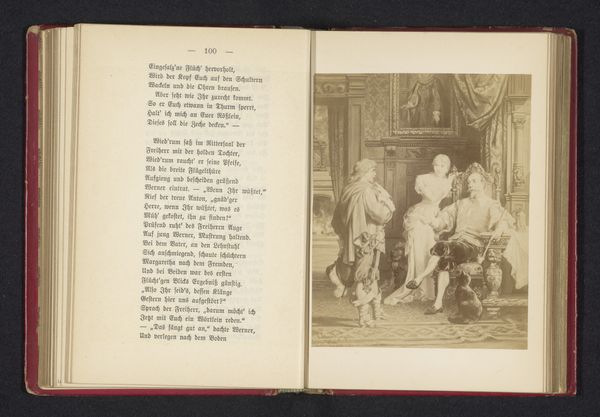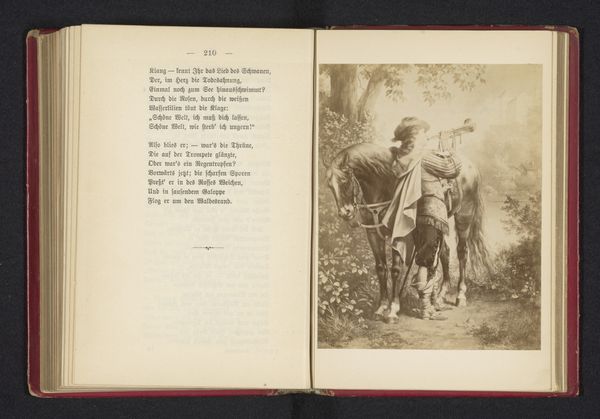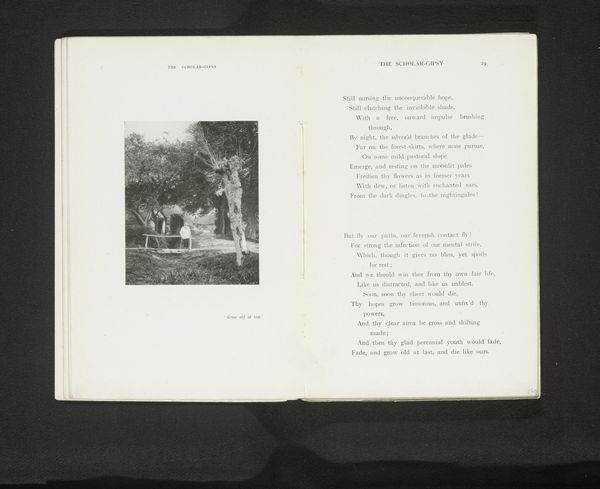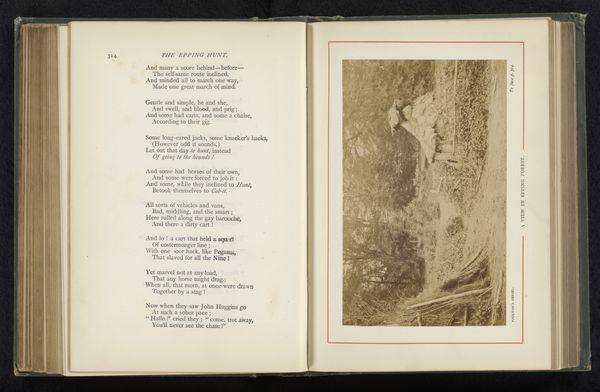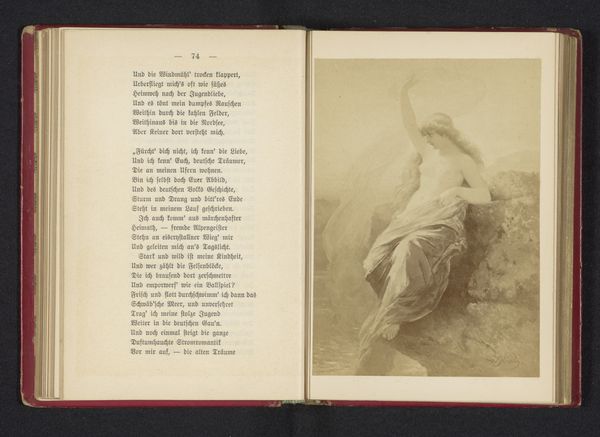
Fotoreproductie van een schilderij van een scene uit Der Trompeter von Säkkingen, voorstellende Maria en de trompetter die trouwen before 1890
0:00
0:00
Dimensions: height 127 mm, width 99 mm
Copyright: Rijks Museum: Open Domain
Curator: This artwork, dating from before 1890, is a photogravure print called "Fotoreproductie van een schilderij van een scene uit Der Trompeter von Säckingen, voorstellende Maria en de trompetter die trouwen". It depicts a scene from the novel "The Trumpeter of Säckingen." My immediate response is that this is staged—the light feels almost artificial in its gentleness. Editor: There’s a sentimentality to this, an almost theatrical artificiality even in the reproduction. Looking at the visible bookbinding, and the way the photographic reproduction itself seems aged. What do we know about how these images were made and circulated, as a mass reproduction rather than the painting itself? Curator: Precisely! We are viewing a photographic reproduction *within* a book, transforming it into an accessible, portable narrative. This speaks to the rise of print culture and its influence on disseminating romantic ideals throughout society. In essence, we are several degrees removed from the source material—and, so, the “truth.” Editor: The romantic elements really emerge when thinking about class and gender. Here, we see what is being presented to readers, perhaps middle-class women or even workers aspiring for more and given this view of upper class gender dynamics. You also see here the emphasis on skill and material, the high artisanal element that printing has, is now directed towards…romance. It makes the materiality feel critical to how we engage this story. Curator: That tension between "high" and "low" art is so evident here. The source material is a celebrated romantic novel, and this photo-reproduction brings elements of elite artmaking within reach of wider audiences. This reproduction offers both the text on one side and image on the other, thereby influencing what kind of reading, and understanding, can come about for its reader. And also its social and gender expectations. Editor: I agree. Examining how this reproduction alters accessibility brings light to how its labor, both artistic and the process of mass producing imagery, helps define a cultural shift. It makes this intimate scene a form of spectacle for new eyes. Curator: Yes, it is in how these scenes became more visible through reproductive strategies where stories become part of popular visual language, thereby forming ideals and expectations across class. Editor: So much is bound up here…materials, labor, reproduction…romantic dreams accessible through a material book. It offers much insight. Curator: It really does, revealing layers of how culture shapes not just art, but also social values. A worthwhile study indeed.
Comments
No comments
Be the first to comment and join the conversation on the ultimate creative platform.
